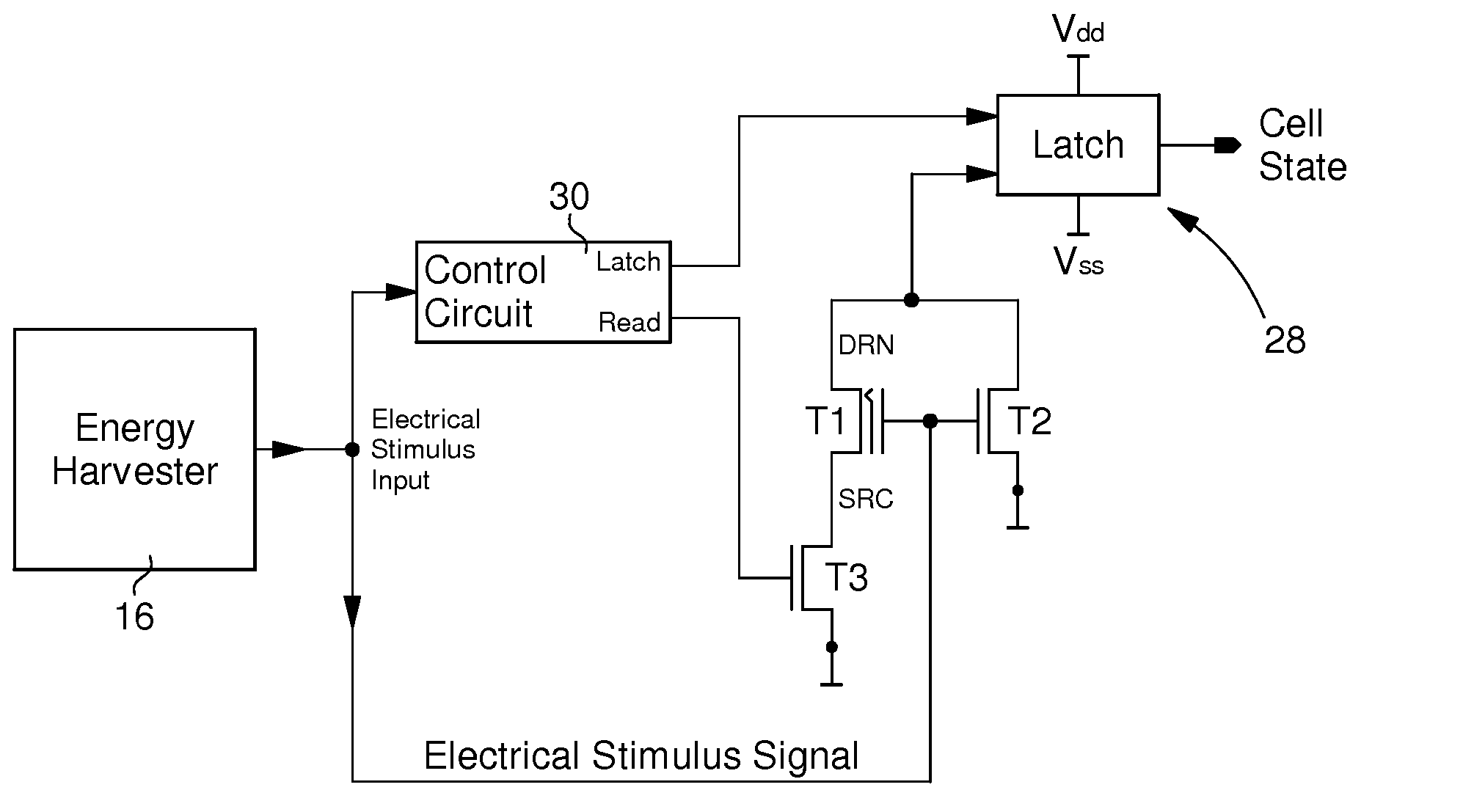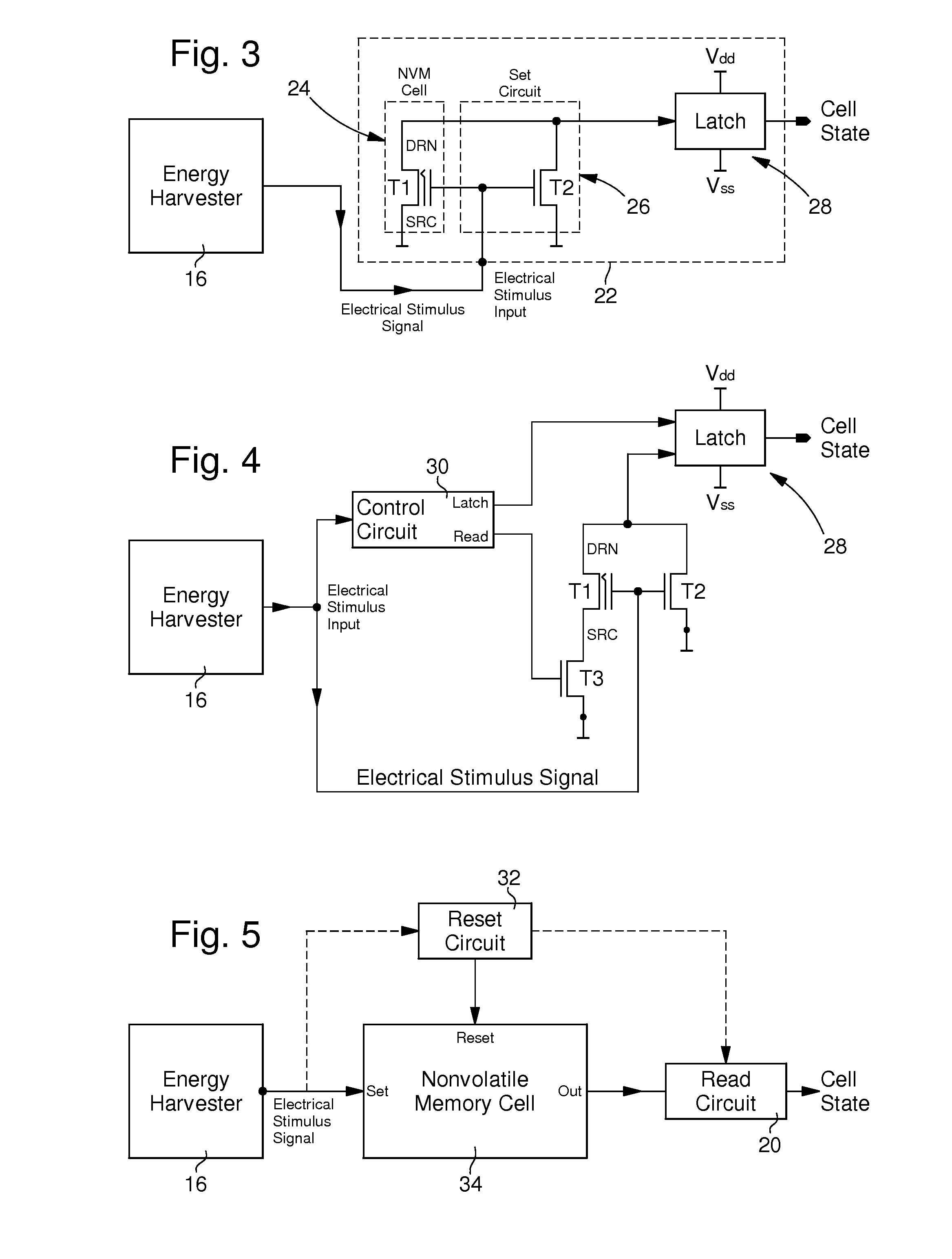Powerless external event detection device
a detection device and event technology, applied in the direction of instruments, building locks, static storage, etc., can solve the problems of device not being functional, device not being able to detect and record events, and device having a limited lifetim
- Summary
- Abstract
- Description
- Claims
- Application Information
AI Technical Summary
Problems solved by technology
Method used
Image
Examples
first embodiment
[0030]FIG. 2 shows the basic architecture of the external event detection device according to the invention. The DC electrical energy of an external event is collected by the sensor forming an energy harvester 16 and provided to a memory part of the electronic unit, in the variant of FIG. 2 formed by a Non-Volatile Memory (NVM) unit 18, comprising at least one NVM cell, through an electrical stimulus signal line. In the case of the lock of FIG. 1, this energy is provided by the force applied by the spring 8 on the piezoelectric element of the sensor 10. The memory part 18 is arranged for storing data relative to at least one external event detected by the external event sensor 16. According to the invention, the electronic unit is arranged for storing said data by using only the electrical energy contained in the electrical stimulus pulse generated by the external event acting on the sensor. Thus, the detection device of FIG. 2 defines a powerless detection device. This is also the ...
third embodiment
[0058]FIG. 6 shows a preferred electronic design of the The reset circuit is formed by a control circuit 40 and a level shifter 42 receiving a High Voltage (HV). The level shifter is controlled by the control circuit 40. In a variant, the level shifter can be formed by a high voltage inverter (CMOS Inverter). When the detection device is supplied, the latch 28 will automatically have a logical state corresponding to the logical state of the memory transistor T1. If this transistor T1 is set, the user takes note that a given external event has been detected. Then, the user can reset the memory cell so as to reuse the detection device. When a reset signal is received at the reset input of the control circuit 40, then the outputs of this control circuit are switched as follows:
[0059]The latch output is driven to 0 V instructing the latch to turn OFF for protecting itself from the high voltage which will be applied to the drain DRN of transistor T1.
[0060]The read output is driven to 0 ...
PUM
 Login to View More
Login to View More Abstract
Description
Claims
Application Information
 Login to View More
Login to View More - R&D
- Intellectual Property
- Life Sciences
- Materials
- Tech Scout
- Unparalleled Data Quality
- Higher Quality Content
- 60% Fewer Hallucinations
Browse by: Latest US Patents, China's latest patents, Technical Efficacy Thesaurus, Application Domain, Technology Topic, Popular Technical Reports.
© 2025 PatSnap. All rights reserved.Legal|Privacy policy|Modern Slavery Act Transparency Statement|Sitemap|About US| Contact US: help@patsnap.com



